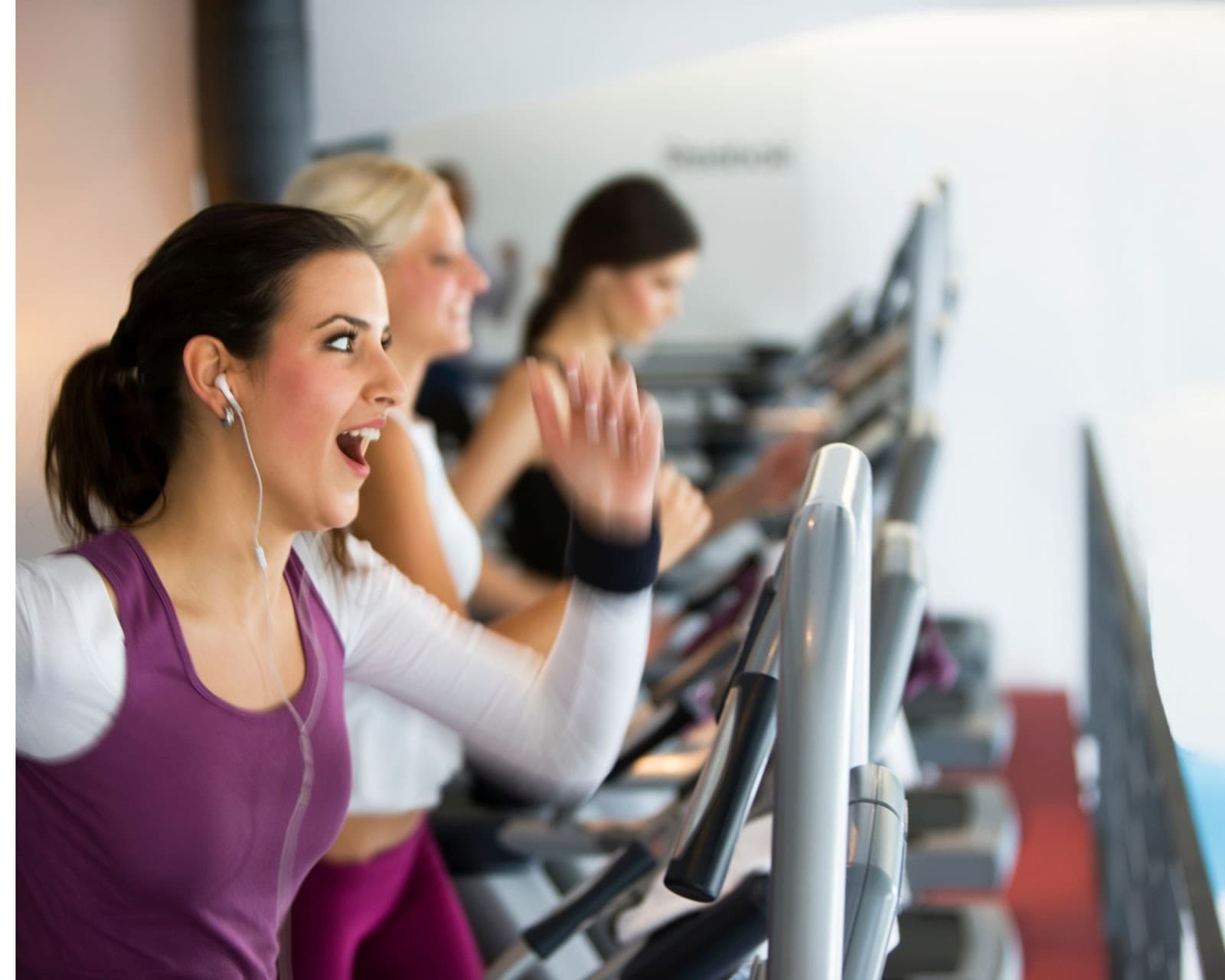
If you have frequented a fitness center lately, you might notice a plethora of treadmills. Typically, most of the ones you’ll see in a high-traffic area, like a large commercial gym, will be regular treadmills. These treadmills have a flat base, with the tread parallel to the floor.
On the flip side, you might come across some boutique gyms that have curved treadmills – or even one in a home gym! There are several different brands of curved treadmills, but they all have one thing in common….and that is that there is no motor present to push you along like there is on a regular treadmill.
Why Use a Curved Treadmill?
The lack of a motor might sound intriguing to some and like a deterrent to others. After all, curved treadmills are promoted to enable runners to pace themselves more productively than on a regular treadmill since the foot strike pushes the belt as one moves. This essentially encourages pacing more naturally than using the increase and decrease speed buttons on a regular treadmill.
Along with being able to pace better (albeit differently than a regular treadmill pace), curved treadmills are also “green” treadmills since there’s no need for electricity to power the machine. Marketing companies have also noted that changing up the runner’s stride (and overall leg stroke) can improve the overall run by using a curved treadmill.
But are these promotions and promises correct? What are the benefits of a curved treadmill, and how does one differ from a regular treadmill?
How Does a Curved Treadmill Work?
If you hop onto a regular treadmill at a gym or in your garage, you’ll notice that all you need to do to get the machine going is hit “start” and decide your running or walking speed with a push of a button. Once up to speed, all you have to do is move along with the speed of the tread.
When it comes to a curved treadmill, the process is much different. When you step on the tread, you’ll notice an upward curve at both the front and back of the treadmill, giving the machine a concave shape. You’ll need to use your own momentum and friction to get the machine started since there is no motor to propel the tread.
That being said, getting the machine going can be tricky, especially if you have never tried a self-propelled treadmill before. The further up the front curve you step, the faster you can move forward – and there is typically a knob somewhere on the dashboard that allows you to control the overall resistance of the tread itself.
Intensity Levels on A Curved Treadmill
If you think you’re working harder with a curved treadmill, you are 100% right. Studies have found that using a curved treadmill increases the rate of perceived effort and increases heart rate and oxygen intake.
The level of intensity as one runs can also be variable, just like it would be if you were running outdoors. If you decrease your intensity on the tread, the pace will slow, and vice versa – just like if you were to run outdoors in various environments. Curved treadmills also tend to strengthen the hamstrings and glutes since the slight elevation at the front of the treadmill requires posterior strength.
Bottom Line
Essentially, a curved treadmill will make you work harder than a regular treadmill since you have to use your own power to generate movement with the tread rather than using a motor on a regular treadmill.
In the long run, you’ll want to aim to incorporate both running on a treadmill (either regular or curved) along with tempo or interval runs outside, depending upon what your training goals are. Just keep in mind that whatever pace you utilize on a regular treadmill, it will not correspond to the pace on a curved treadmill. The timing of your runs will be slightly off. You’ll have to practice on a curved treadmill to see just what the time deficit is and adapt it to your training program accordingly.
